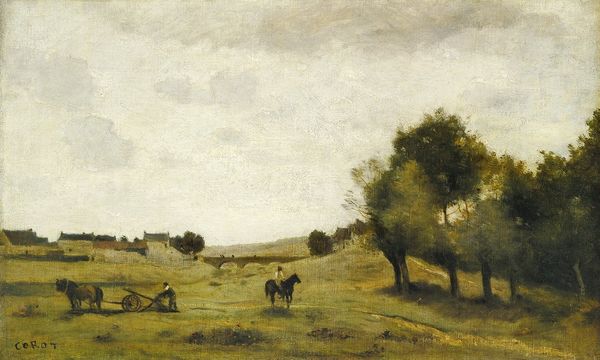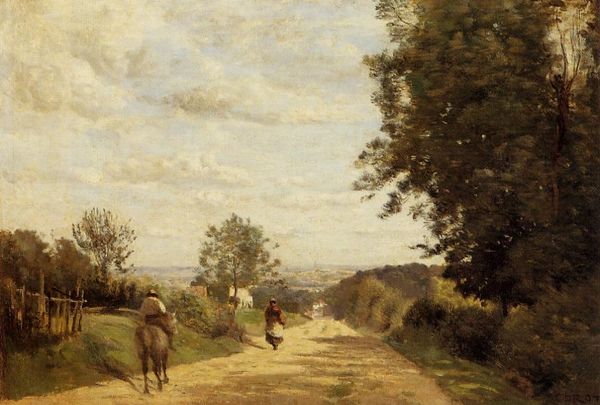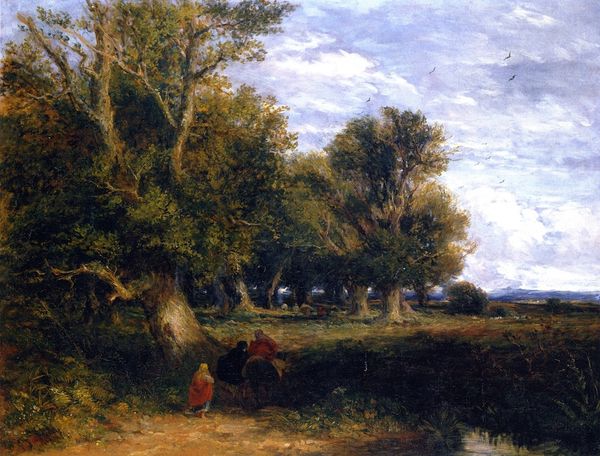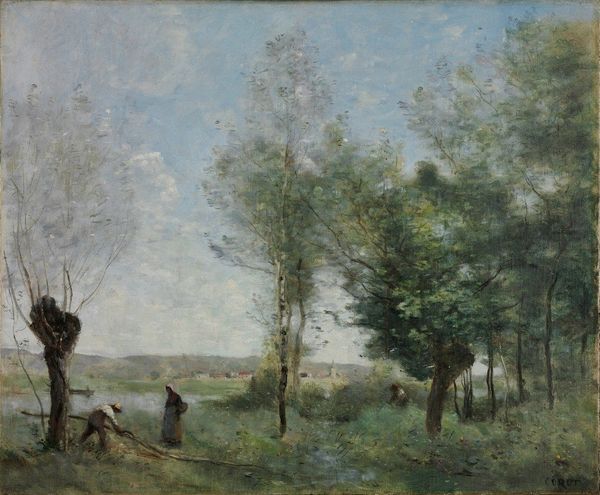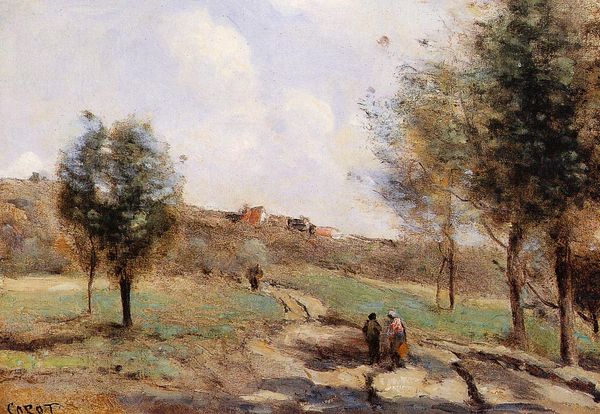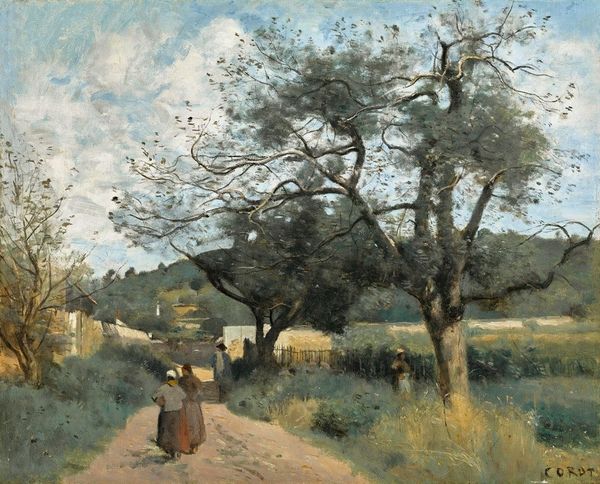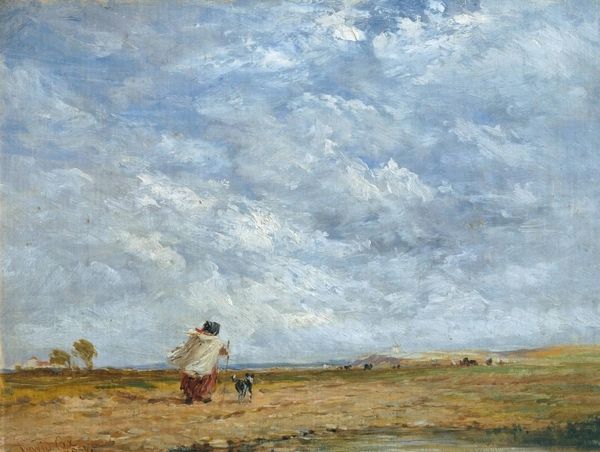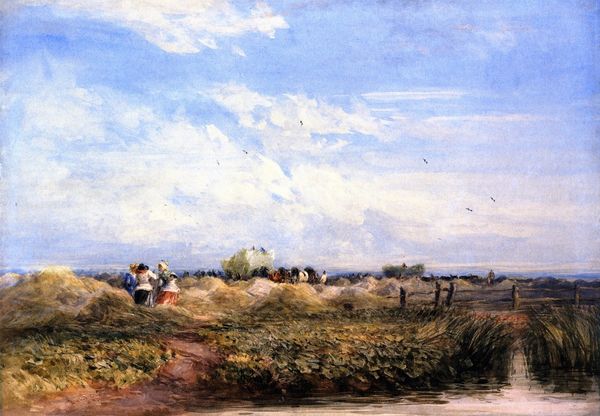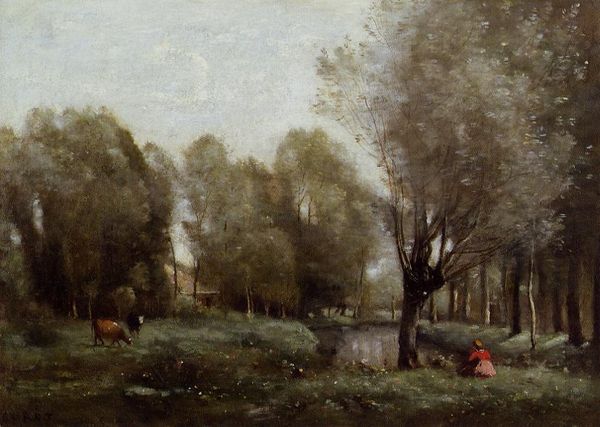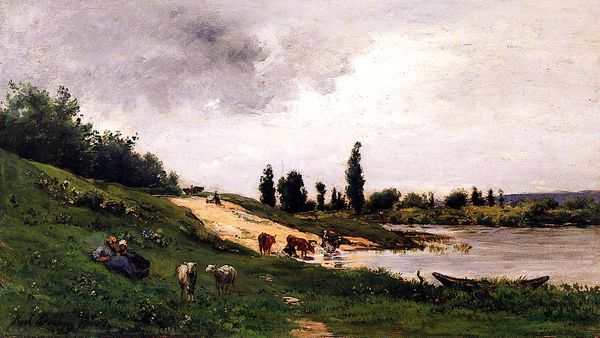
Copyright: Public domain
Editor: Here we have Camille Corot’s "Field above the Village (Marcoussis)" painted around 1865, using oil paint, presumably en plein air given the artist's practice. There’s a stillness in the composition, a quiet moment captured. What strikes you about it? Curator: What I find compelling is considering Corot's choice of materials and the societal context. The readily available oil paints, facilitated by industrial production, democratized art-making. How does that inform our understanding of his landscapes, especially compared to earlier eras where pigment creation was highly specialized and class-dependent? Editor: That’s interesting, I hadn’t thought about the impact of industrialization on artistic production like that. I always just focused on his style, bridging Realism and Impressionism. Curator: Exactly, we see him shifting from the idealised landscapes demanded by the Academy and embracing direct observation, a product of Realism. But the "how" of this observation matters. The accessibility of materials impacted his freedom to work outdoors, a form of labour itself. Note the rougher brushwork compared to earlier, carefully layered landscape paintings, that's the new method of production informing the aesthetic result. Editor: So, it's not just *what* he painted, but the availability of *how* he painted that makes it so revolutionary. The painting itself becomes a record of changing social and economic forces. Curator: Precisely. Consider the role of the art market too, the emerging middle class consuming these easily produced landscape paintings… were they purchasing art or a romanticised view of the countryside? The materiality of this image is not independent from its societal impact. Editor: That gives me so much to think about, the relationship between materials, labor, and the consumer. Curator: Yes! Always consider that relationship! Editor: Definitely will. Thank you.
Comments
No comments
Be the first to comment and join the conversation on the ultimate creative platform.
